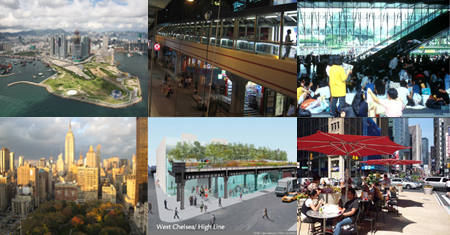The Skyscraper Museum is devoted to the study of high-rise building, past, present, and future. The Museum explores tall buildings as objects of design, products of technology, sites of construction, investments in real estate, and places of work and residence. This site will look better in a browser that supports web standards, but it is accessible to any browser or Internet device.
HONG KONG | NEW YORK URBAN DIALOGUES
An international conference on density and the public dimension
HONG KONG
JANUARY 21 & 22, 2010
Presented by: The Hong Kong | New York Urban Exchange Group, AIA Hong Kong, and The Skyscraper Museum
Organized by: The Government of the Hong Kong SAR, Bureau of Shanghai World Expo Executive Committee
Sponsored by: Hong Kong Land, Kohn Pedersen Fox
Joint Conference Chairs: Nicholas Brooke, Chairman Professional Property Services Limited; Chairman Hong Kong Science Parks Corporation; Carol Willis, Director and Founder, The Skyscraper Museum, New York; Paul Katz, President, KPF, New York
This conference is the second of an ongoing exchange between the world's great vertical cities. The first conference, Vertical Density | Sustainable Solutions was presented in New York in October 2008.

Clockwise, from top left: West Kowloon Cultural District, Hong Kong; Midlevels Escalator, Hong Kong; HSBC on a Sunday, Hong Kong; Madison Square Park, New York; The Highline, New York; Broadway Boulevard, New York
The extreme vertical density of Hong Kong and New York, together with newly expanding cities such as Shanghai, is driven by market forces and private investment and shaped by municipal regulation and planning. In particular, the highly evolved skyscraper urbanism of Hong Kong and Manhattan reflects the high demand for space and prime locations and expresses their success as magnets for business.
How can the vital concentration and growth of successful cities be balanced with an enlargement of the public dimension and a celebration of urban space and life? How can the essential character and cultures of place be promoted, and how can government and private interests combine to create and maintain this public dimension of the urban environment?
While New York and Hong Kong share exceptional affinities and can learn much from a continuing exchange, their experiences also can benefit other cities just beginning their skyscraper evolution. In that spirit, the first session of this urban dialogue includes Shanghai and expands our focus.


